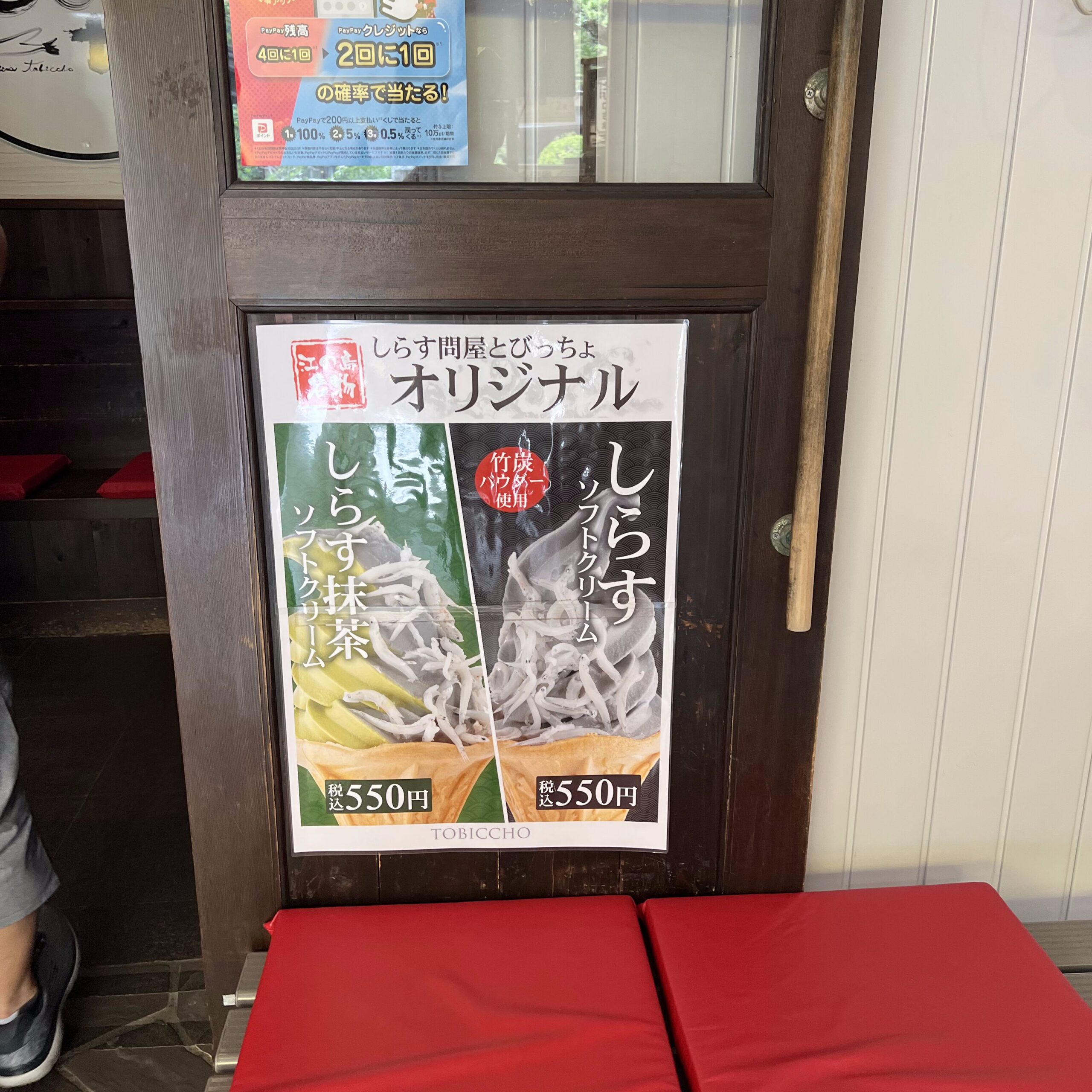Physical Address
304 North Cardinal St.
Dorchester Center, MA 02124
Physical Address
304 North Cardinal St.
Dorchester Center, MA 02124
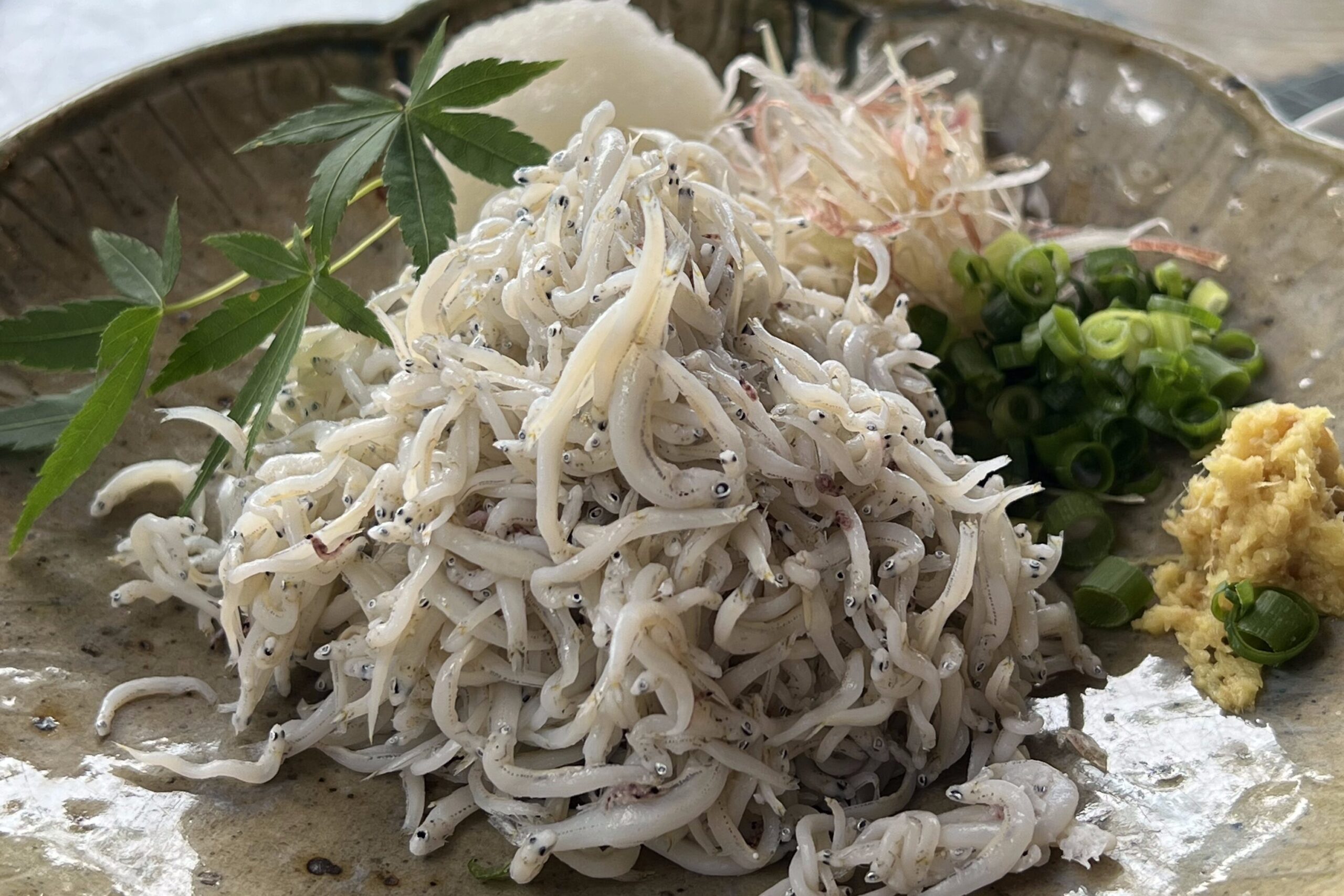
Wondering what are some must eats in Enoshima? I traveled to a coastal town (Enoshima) to find fresh baby fish (shirasu) and an amazing fish stew.
When you think of Japan you think of sushi. And while I had great sushi in Tokyo, I wanted even more unique seafood I couldn’t get back home. After talking to some people, I was told to try shirasu: freshly caught whitebait (young sardines or anchovies). After looking up pictures of it, i was instantly intrigued by these baby fish that were only centimeters long, and the range of preparations they could have. Soon, I learned the most unique way to enjoy shirasu was to ask for ‘nama shirasu’, which is it’s uncooked form.

I was sold. Now that was a new one and certainly something I knew i had to try. And after doing some digging, I quickly learned that in order to maximize chances at getting to try this coastal delicacy, you have to go to where the fishermen catch it. After doing deep research what were my chances of getting it (timing, season, which restaurants), I made it a mission on a day-trip from Tokyo to find this dish.
The morning’s 6:30 alarm was followed by a 1 hour train to Enoshima from my hotel in Shinjuku, making sure I got there bright and early. I primarily chose to head to Enoshima first (as opposed to the more popular Kamakura) to maximize my chances of getting shirasu in a less crowded tourist destination. I also heard of a restaurant called Enoshima Koya which seemed to truly focus on high-quality, traditional breakfast. Additionally, while I’m sure Enoshima has other traditional places offering fresh seafood, I found the pictures, ambience, and accolades of Enoshima Koya to signal a slightly more elevated experience.
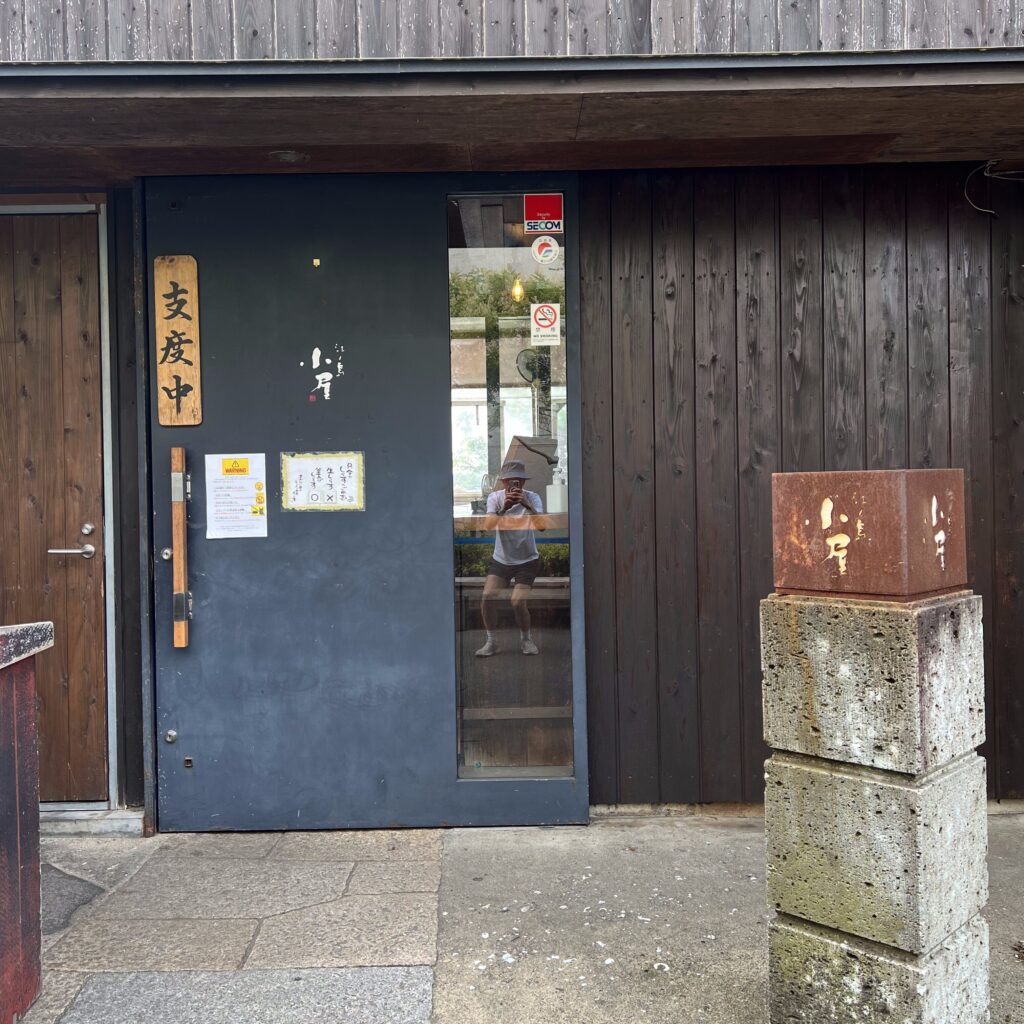
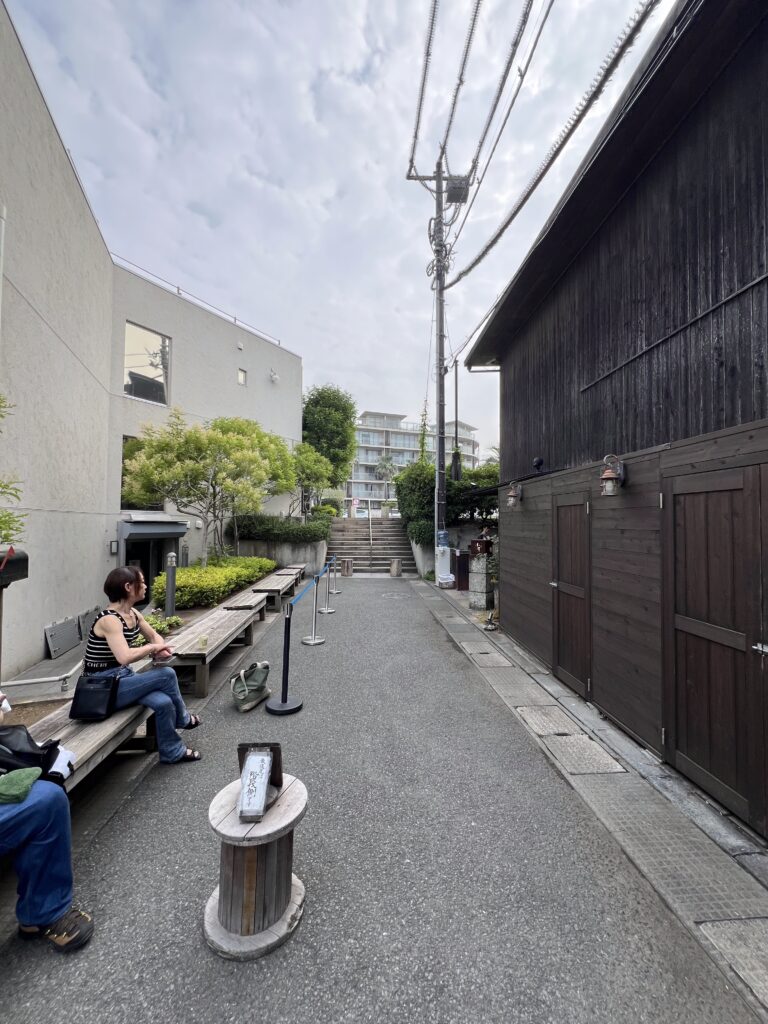
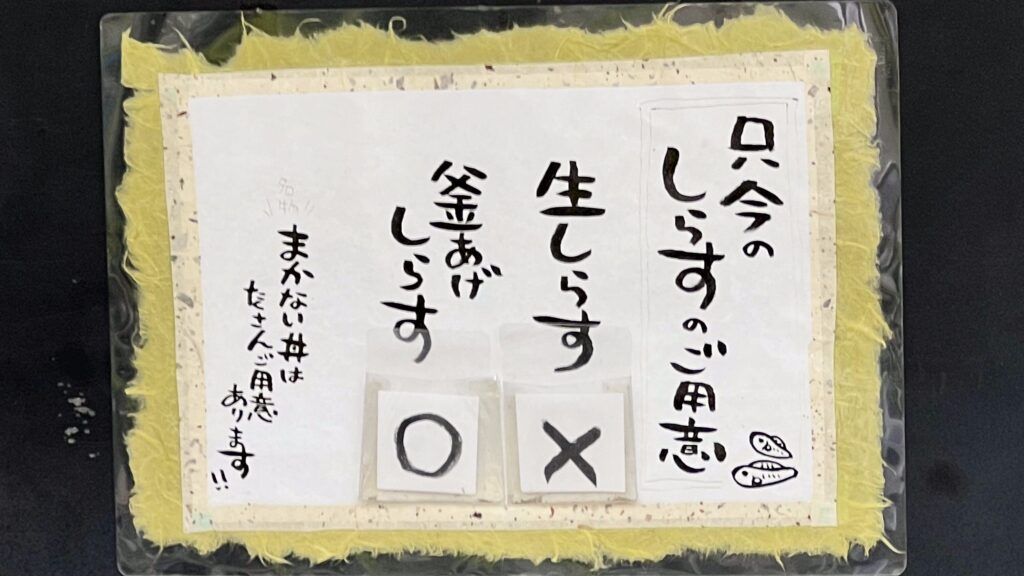
When I arrived at 7:30 am (before opening at 8), there were already two people in line. I waited and looked around and stumbled upon a handwritten sign that I took to Google translate. Maybe these are the fish they have today, maybe these are the opening times?
Unfortunately, when I translated it on Google translate, I quickly learned the sign would save me dissapointment later. The sign read: Kamaage whitebait – ‘O’ (which I later meant means boiled) and Raw whitebait – ‘X’. While I was disappointed (and confirmed with the waitress they were indeed not getting any fresh whitebait today), she recommended i do try their boiled shirasu as a side to my meal just to try it, which I ended up ordering.
Based on recommendation from the waitress, I ultimately decided on the ryosi-jiru (the Fisherman’s breakfast), which included a fish soup and sashimi.
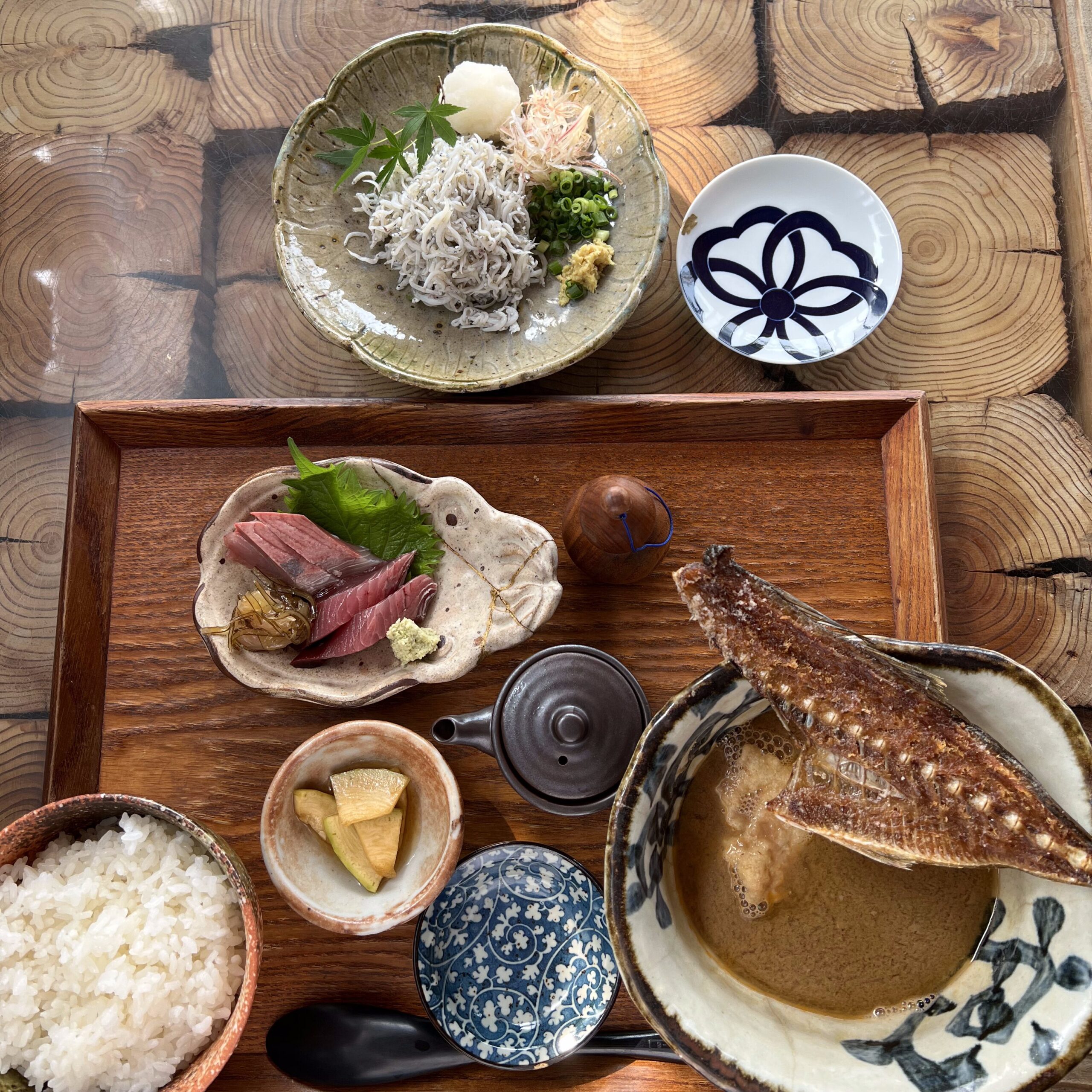
When the food arrived I was immediately struck how artisanal the dishes + dish-ware looked and how the ingredients really shined on the plate. As the tray hit my table and I brought myself closer to the fisherman’s stew, I caught strong a strong whiff of something similar to a miso-glazed cod. They walked me through all the components on my tray, including the sashimi that was yellowtail and katsuo (which I later learned was bonito).
I take a deep breath and enjoy the ocean breeze that wafted in more of the fish smells towards my nose. I didn’t know what to eat first! As a personal preference, I started with the sashimi in case the soup over-powered the rest of the fish. Yellowtail was solid. Bonito was even more solid, not hiding at all it’s super strong taste without being too fishy.

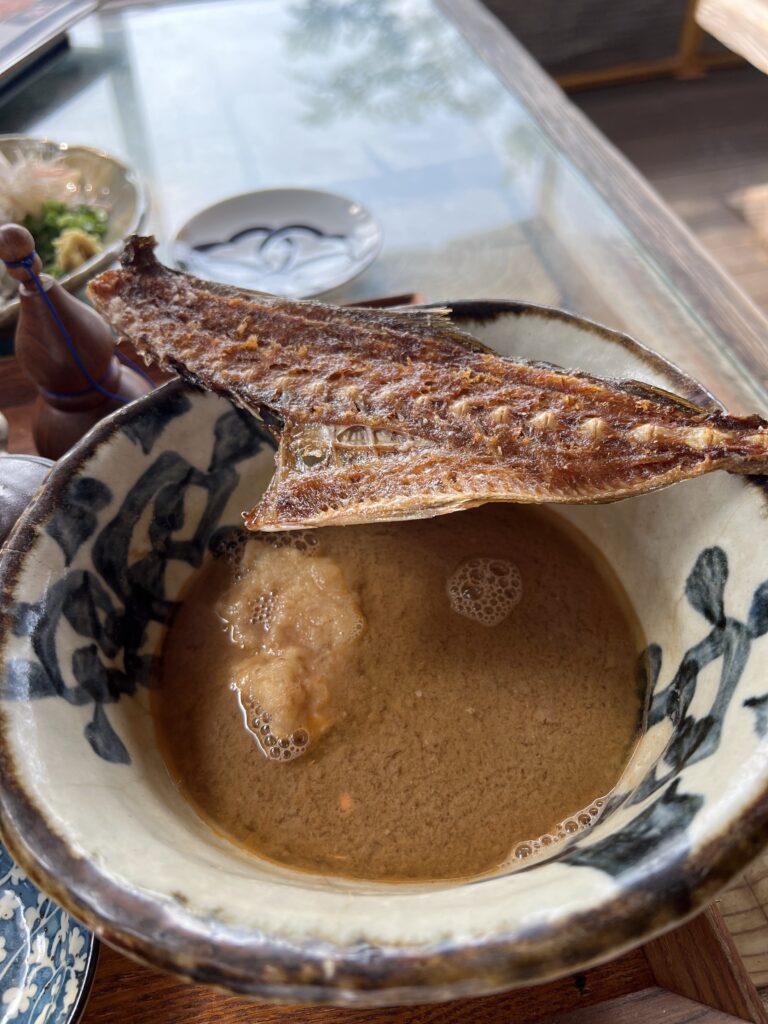
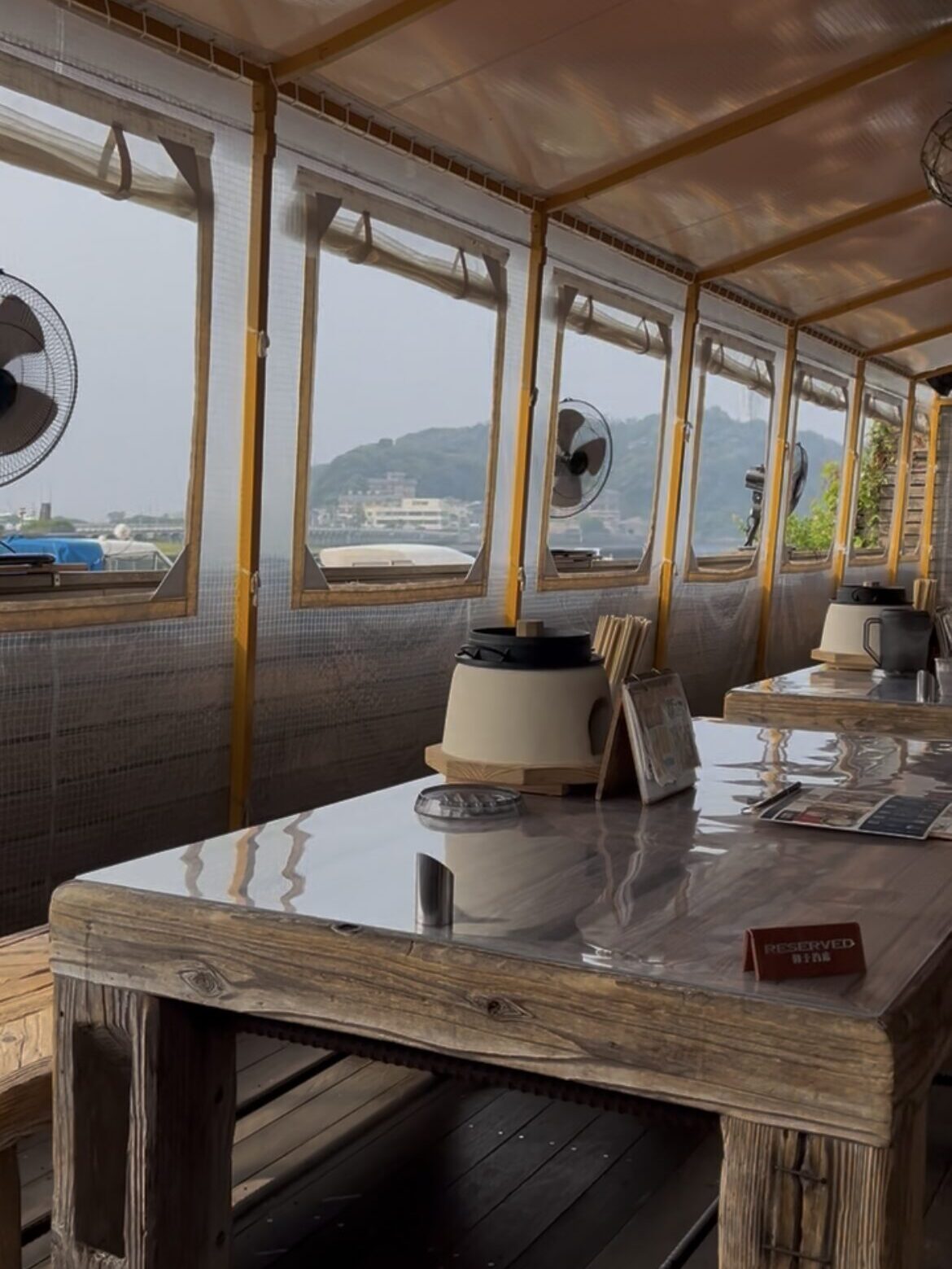
However, the real star, in terms of uniqueness and pure taste, was the fisherman’s soup. The menu description is “a thick stew of fish bones” but this was so much more than that. I’d say the taste was something between a more heavy (and less salty) miso soup crossed with a shoyu ramen, I can’t explain it. I also have in my notes “the fish filets themselves were so meaty and robust it almost tastes like pork”, and I mean that in the best way.
Perhaps the most unique thing was the deep-fried fish bone served on top. I bit into it after some sips of the broth and bites of the fish, and I saw the waitress chuckle in a friendly way. I don’t think biting a fish spine directly was going to work, so I decided to soften it in the soup (not that I know this was the right thing to do but I went ahead anyway). After 30 seconds or so I tried it again and the fish bone was much more chewable and perhaps my favorite part of the meal – it felt like eating a super thick salmon skin or fish skin.
Wait, I almost forgot, we still have the shirasu to try. As I finished the last slurps of the soup, I washed my palette with some of the pickled radishes or gourds on my tray. Ok, here we go…. I mix up some of the green onions, ginger, and daikon with a bite of the shirasu and take a bite:
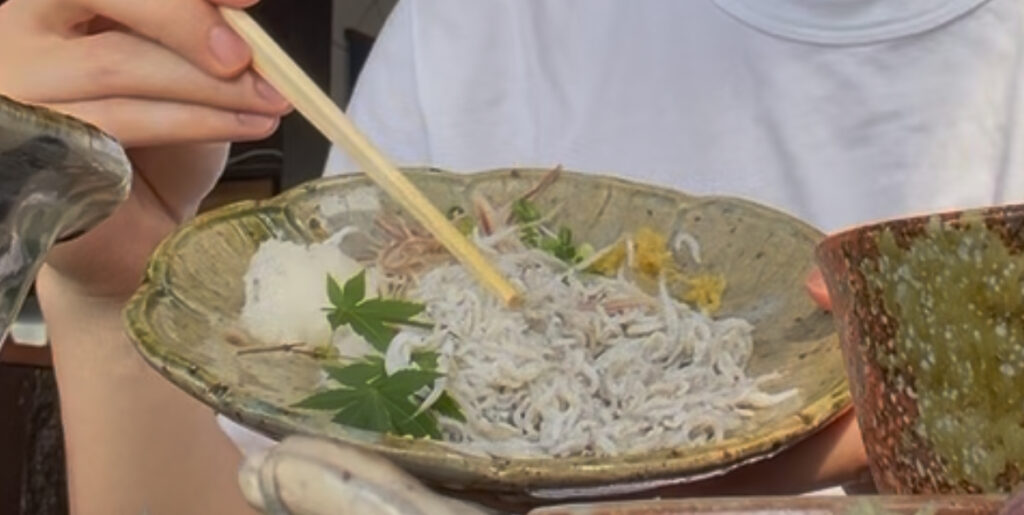
Ok, YUM! Besides getting used to so many tiny fishes in my mouth (and slightly feeling bad), I low-key loved my first bite. I was slowly trying to process what this taste was like, it almost felt familiar, but still exciting. The best i could do was ultimately describing it like the taste of a mild imitation crab stick shredded up, with maybe an ever-slight after taste of like a really, really mild yellowtail after. Given how much I was sweating, this dish, that almost served as a salad for me at this point, was much needed and infinitely refreshing. Mission accomplished.
Since I struck-out getting fresh shirasu off of the main Enoshima island, I knew I had to make it happen for lunch. I decided to go to across the bridge to the main-island next, since there are some even more popular restaurants in that area given the number of tourists and foot traffic in that area.
By the time I got near the restaurants in the area, it was around 9:30, and I was basically ambling around until the restaurants opened for ‘lunch’ aka 10 am or 11 am. I decided to use the extra time to walk around the cute stops and stop by the Iwaya Cave. After a long, and sweaty, hike around the island, I stopped where Google maps said was the main place to get shirasu with views of the ocean: Enoshima Uomi-tei.

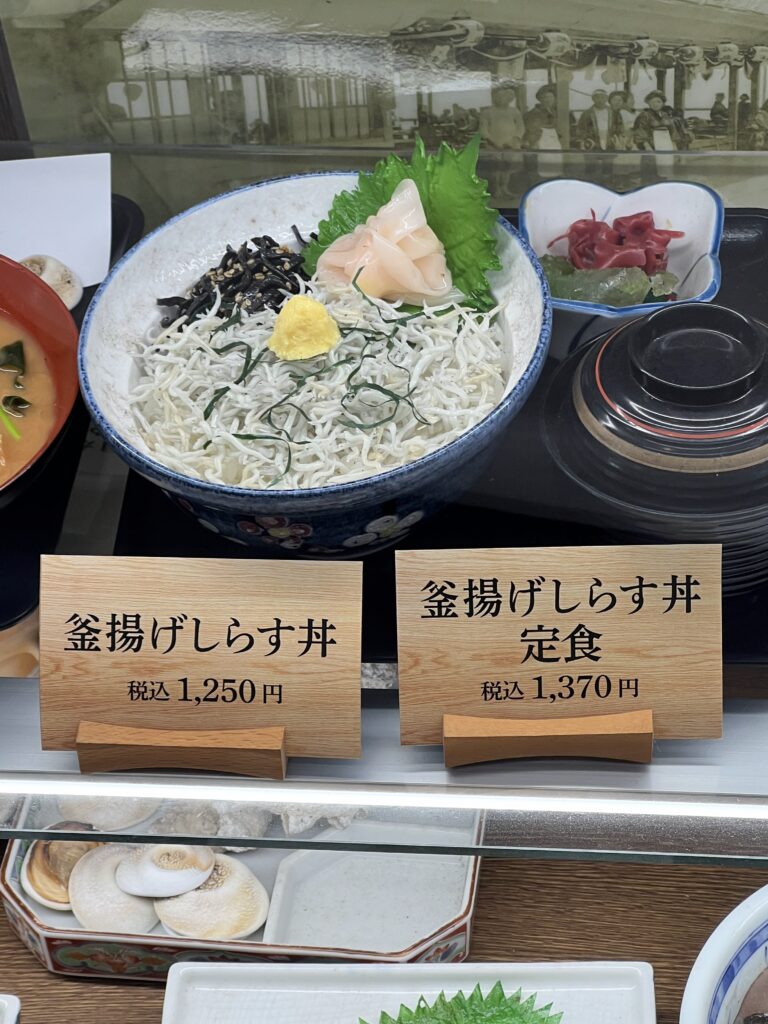
Unfortunately, I asked the hostess at the front if they had ‘nama-shirasu’, and she said ‘maybe’ and said if I wanted to wait a few hours until 11/11:30, we would see if the they’d get it in. The look on her face led me to believe she was just sparing me immediate disappointment, so I decided to cut my losses then.
I decided to walk even closer to the main entrance to the island looking at other restaurants I found on Google Maps such as Yurantei and Inn Yejima. At both, I heard the same familiar words with the same look on their face. I was about to give up, and even started to walk quickly so I could catch a bus back to the subway station and head to Kamakura. Except, I stumbled upon restaurant with a large, wooden sign in front:
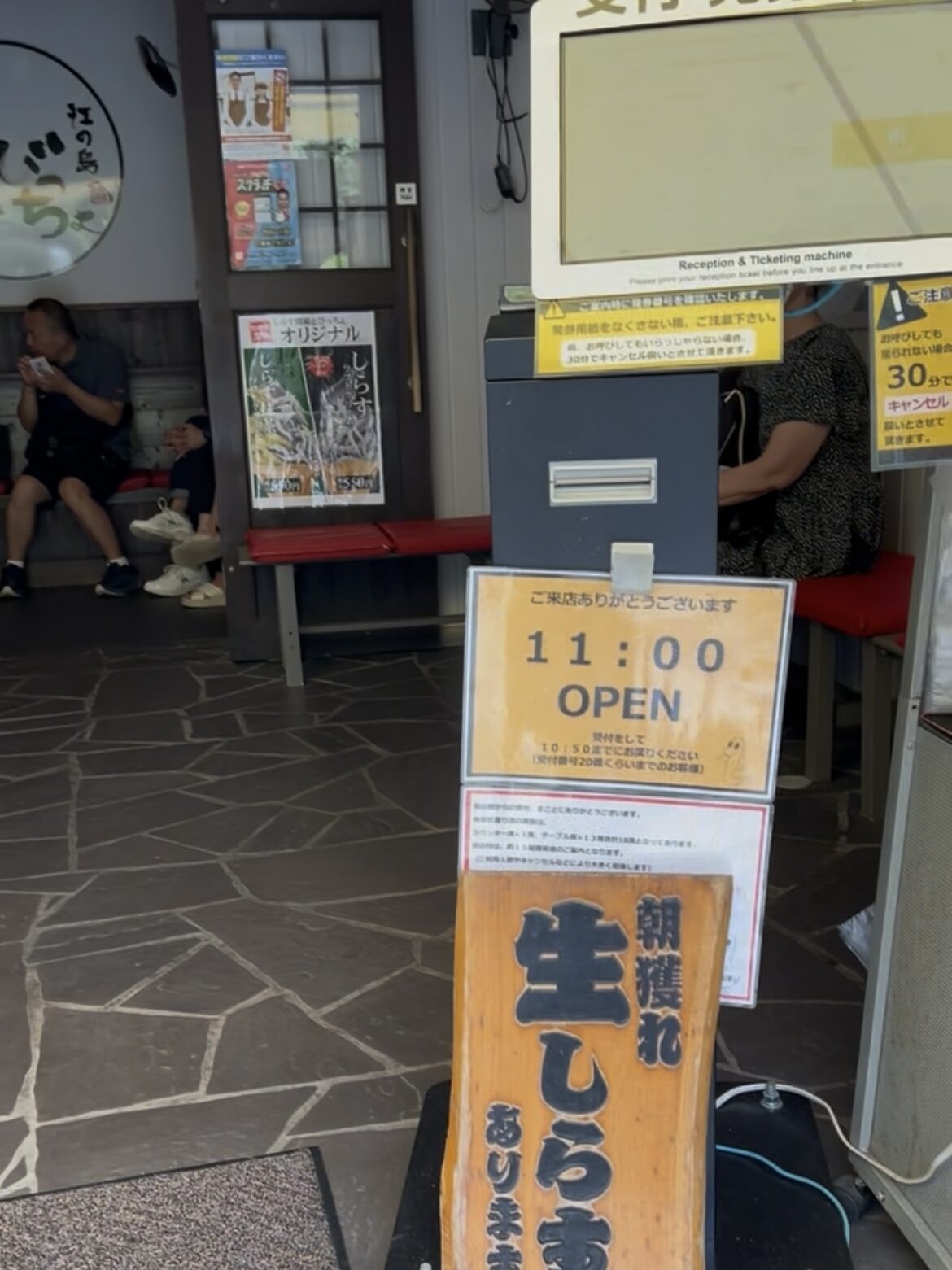

I’ve seen those characters before, and I was able to remember the first one meant raw! I immediately ran to the machine to put my name down. It was only 11am when it opened and I was already 15th in line. Since I was only a party of one, they sat me in a room upstairs for the first seating and I saw an iPad with what I’ve been waiting this long, early day for:
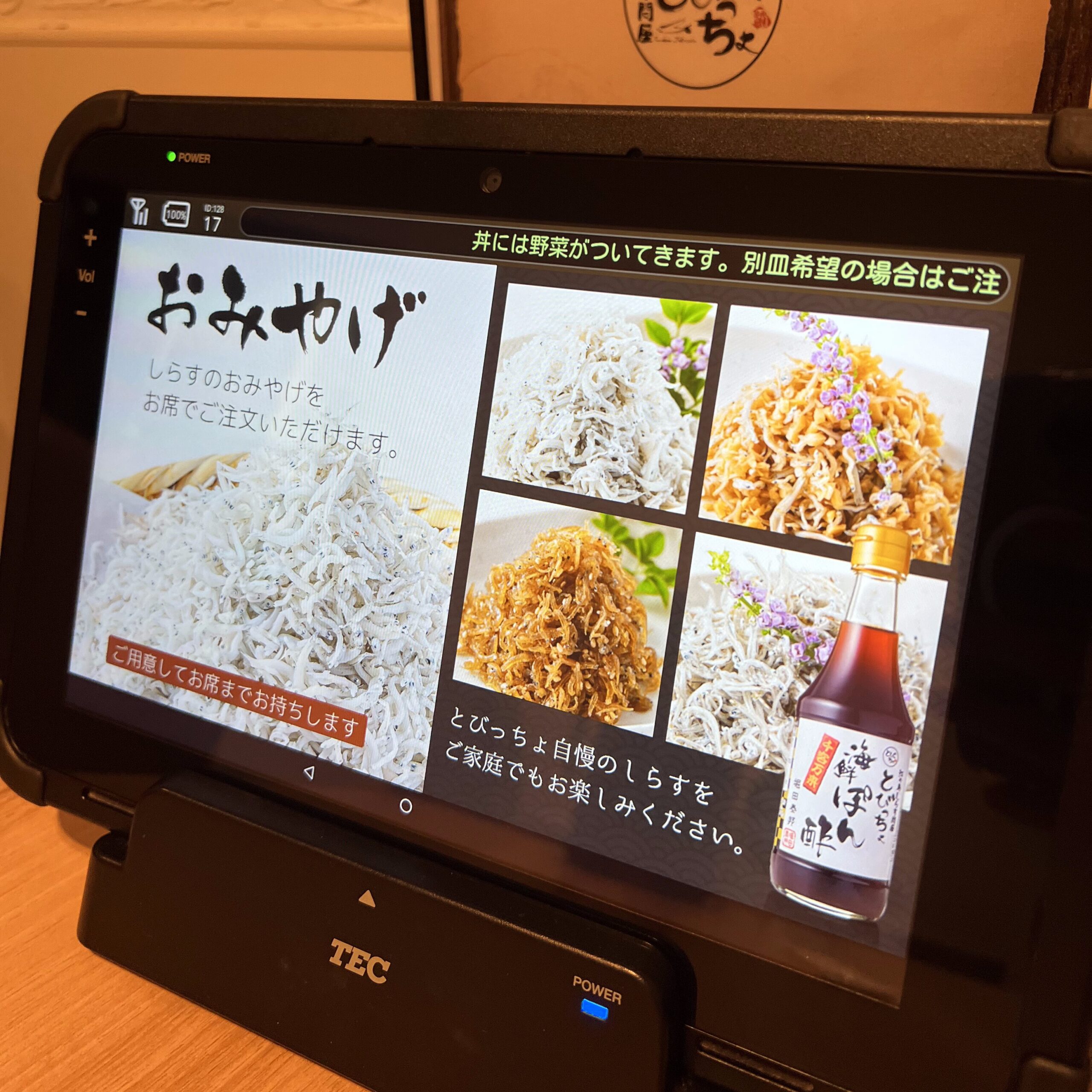
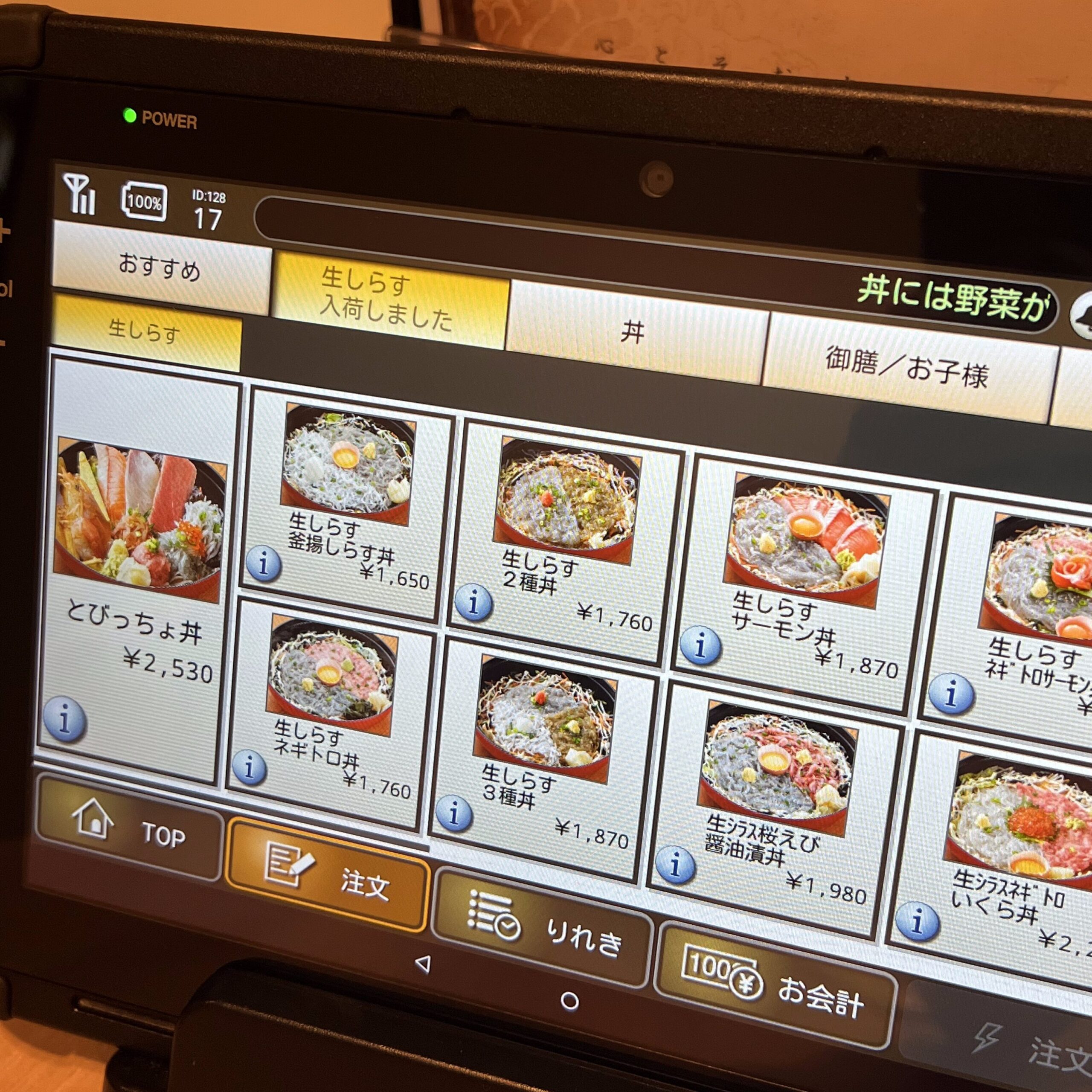
The pictures of the translucent, slivery fish were comforting to see, I have finally found it! But now I’m trying to figure out how to order it. I saw so many options, and so many variations of how it could be prepared. Given that I wanted to try everything, I tried the half plain shirasu and half raw shirasu with a more caramel color.
When the food arrived, I almost was starstruck, I finally found these little fishies I hyper-fixated on during my time in Tokyo.
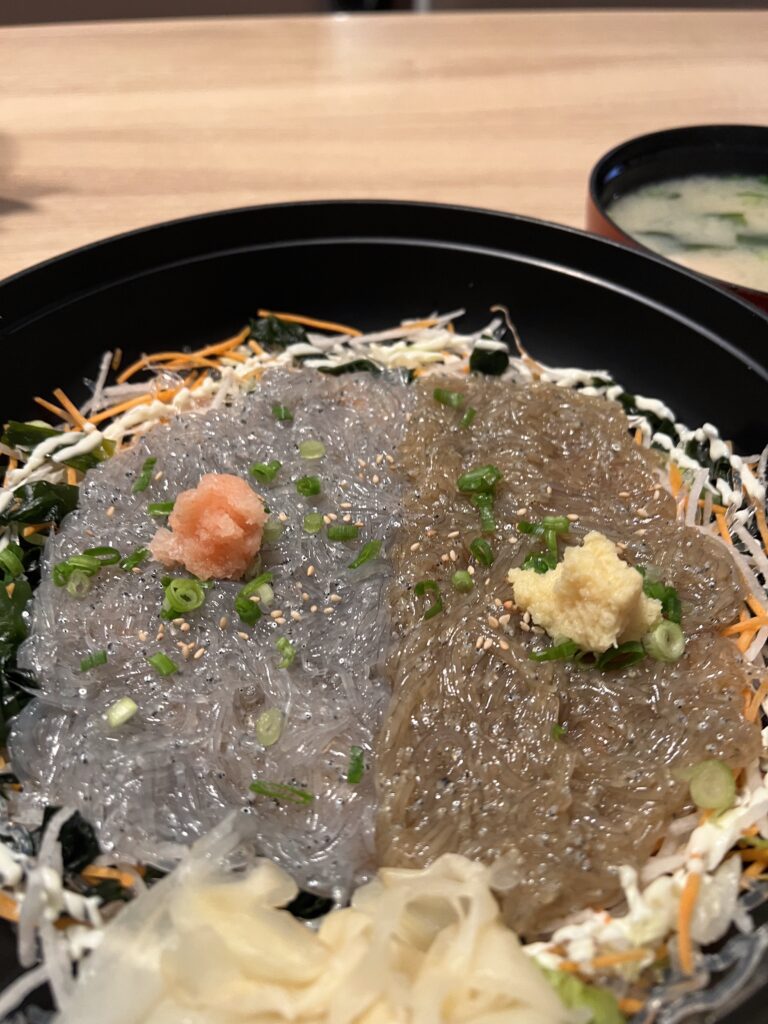
Visually, this looked a little bit more delicate compared to the boiled version I had for breakfast, I could see the eyes and bodies more clearly and I noticed a subtle shine on them. Smell-wise, I could get fishier whiffs when I helped my nose closer to them.
Now here’s the run-down on the taste. I first tried the plain one first.Honestly, at first I didn’t know what to think – It tastes like you’re eating fresh fish for sure, with a familiar oceany taste, without being too fishy. It almost had a slight hint of saltiness that almost made it ever so slightly sour like vinegary or sour, not particularly in a bad way. I then tried the sauced one second and it was really yummy because that salty, slightly sour taste was mixed with a roasted, savory taste that complemented the fish perfectly. I want to say the caramel color came from some sort of sesame oil or soy sauce.
The true surprise was the presentation of the whole meal though, served in a bibimbap-like preparation with slices veggies, a kewpie mayo, and some gingers on top for freshness and cut the fishiness and saltiness. I ultimately broke my rule of eating eating my food vertically and methodically and decided to mix everything together. That’s when the magic came together, as the ocean taste that was probably too much taste and umami to eat plain was balanced out by the plainness of the vegetables and the rice. I almost felt like I was eating a poke-bowl in Hawaii, the fishiness of the shirasu almost serving the purpose of Hawaiian seaweed or furikake.
Should you try shirasu when you’re day-tripping to Tokyo coastal towns? Absolutely, it is an indescribable taste that will make you wanting more and different than anything you can get back home. I personally think it’s a must eat while in Enoshima. The boiled one is an easy sell: it tastes like crab meat and has a mild taste that will go well with any condiments the restaurant provides. The raw one, although it may be a bit more fishy and an acquired taste for some palettes, was ultimately a taste that surprised me and grew to love. I’d recommend this an unforgettable dish to have in your next trip to Japan.
P.S. you can find shirasu soft serve on the island. Since I was way too full after my basically two breakfasts, I’ll have to leave it on my Japan list for next time.
